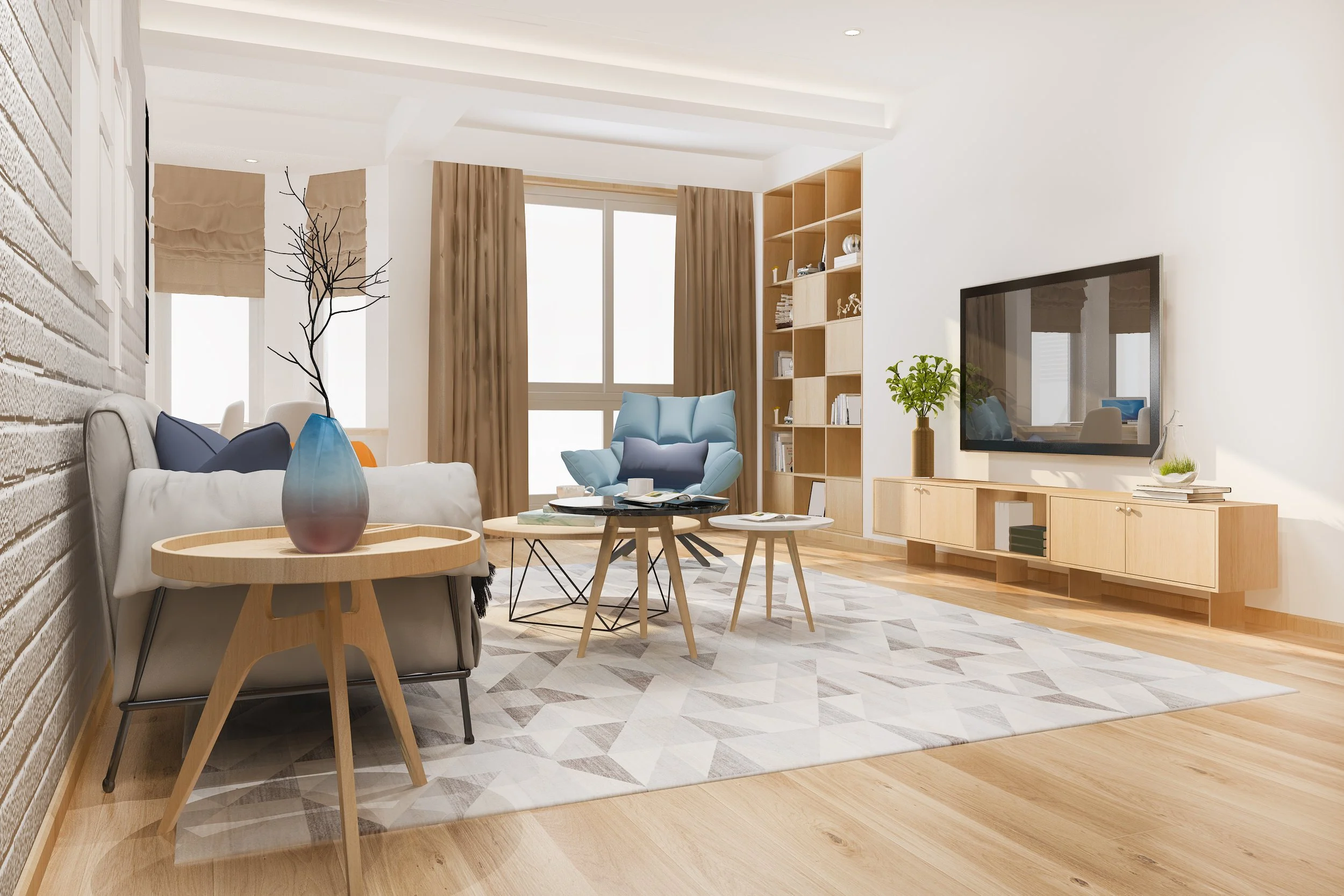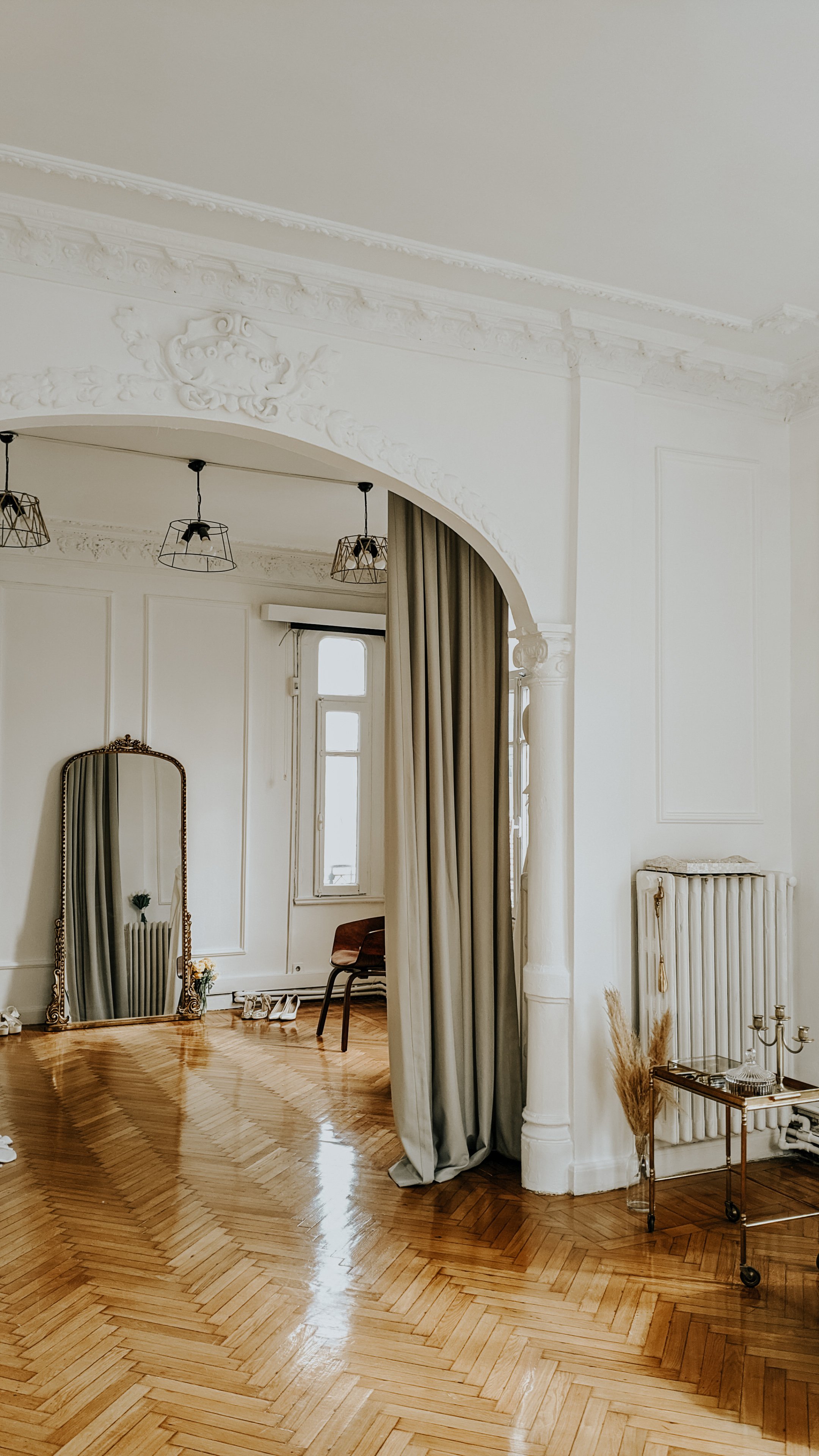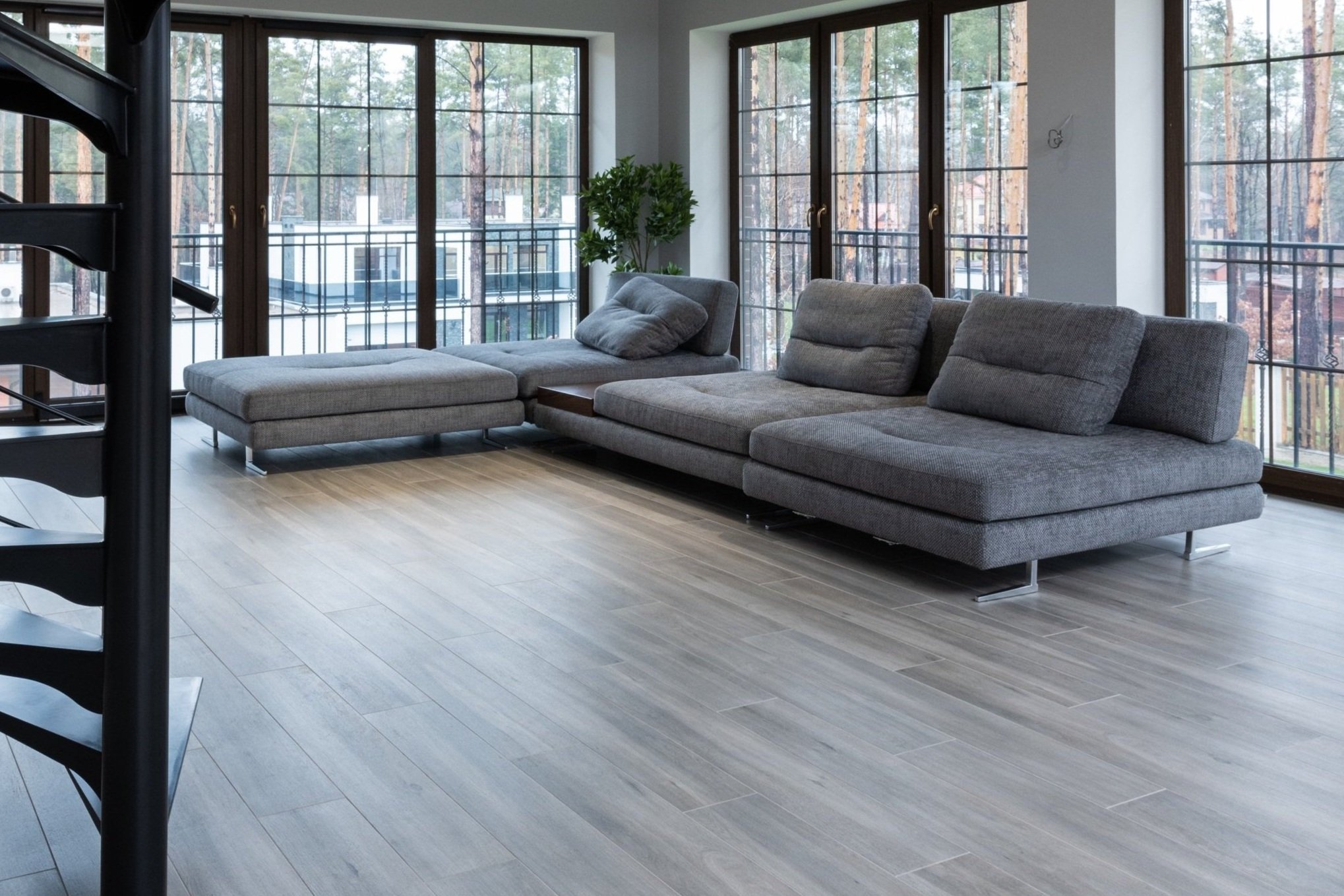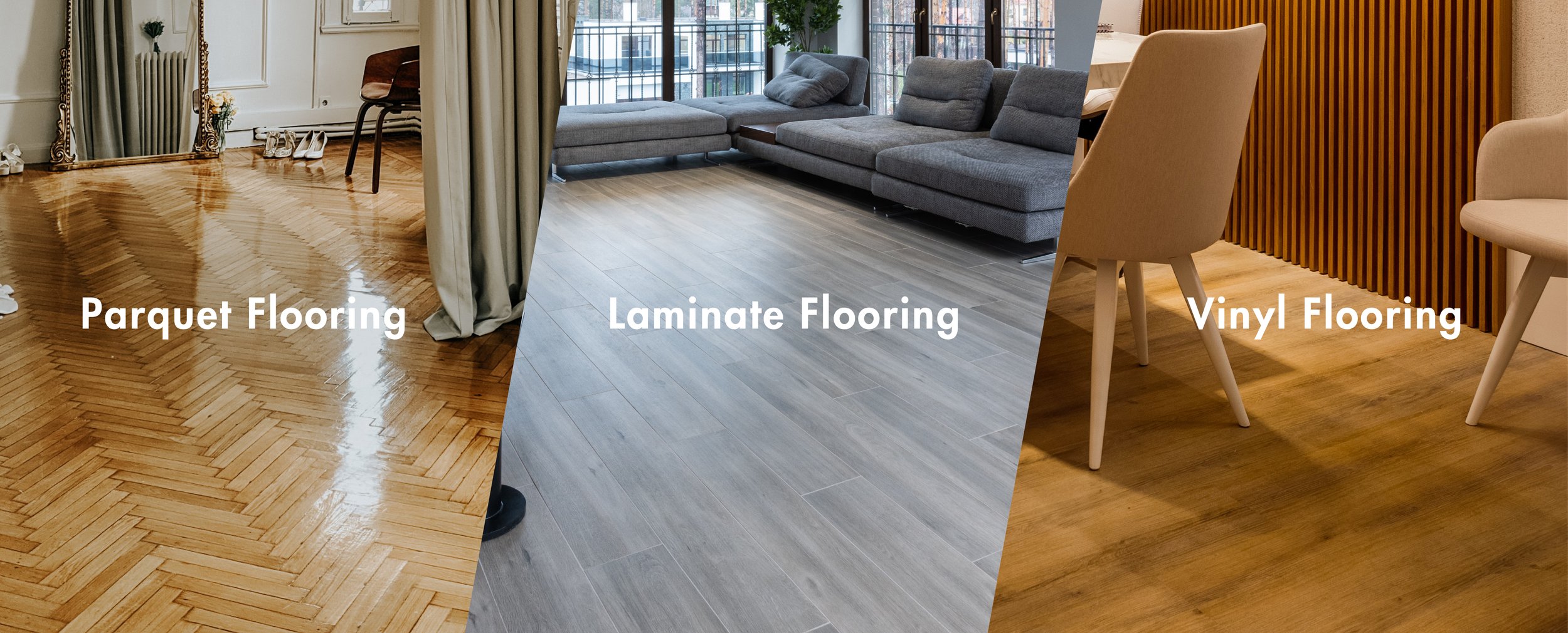Choosing a floor is not as easy as it sounds. Especially now, when the decorative layers on laminate and vinyl substrates are so realistic that they look like solid wood floors. So how do you decide? To help you choose, we compared parquet, laminates and vinyl flooring and list their advantages and disadvantages below.
Parquet flooring
Parquet is a type of wood flooring made by arranging small slats of wood in distinct, repeating patterns. It's popular for its unique design and durability. It is typically made from hardwoods such as oak, maple, or cherry and can be finished in a variety of stains or seals to match different décor styles. Because the parquet strips are hardwood, parquet flooring is similar in look and performance to traditional solid-hardwood strip flooring.
Pros:
Natural beauty: Parquet flooring brings a sense of warmth and elegance to a space and can increase the value of a home.
Durability: Parquet floors can last for decades with proper care and maintenance and can be refinished multiple times to restore their appearance.
Easy to clean: Parquet floors are easy to sweep and mop and can be finished with a sealant to resist scratches and stains.
Hypoallergenic: Parquet floors do not trap dust, pet dander, and other allergens, making them a good choice for people with allergies or asthma.
Cons:
Expensive: Parquet flooring can be more expensive than other types of flooring, both in terms of initial cost and maintenance costs.
Not suitable for high moisture areas: Parquet flooring can warp or buckle if it gets too wet, so it may not be suitable for bathrooms or basements.
Scratches and dings: Parquet floors can be scratched or dented by high heels, pet claws, and furniture.
Not suitable for underfloor heating: Parquet flooring can be affected by changes in temperature and humidity, which can cause it to expand or contract.
Laminate flooring
Laminate flooring is a type of flooring that mimics the look of natural wood or stone using a high-resolution photograph of the material that is sealed under a clear protective layer. It is made up of multiple layers of material, including a core of high-density fibreboard, and is available in a wide variety of colours, patterns, and finishes.
Pros:
Cost-effective: Laminate flooring is usually less expensive than solid hardwood flooring and can be a good option for budget-conscious homeowners.
Easy to install and maintain: Laminate flooring can be installed as a floating floor, which means it does not need to be nailed or glued to the subfloor. It is also easy to clean and maintain.
Wide range of patterns and colours: Laminate flooring comes in a wide variety of patterns and colours, making it easy to find a design that complements any decor.
Cons:
Not as durable as hardwood: Laminate flooring is not as durable as solid hardwood flooring and may show signs of wear and tear over time.
Not suitable for high moisture areas: Laminate flooring can be damaged by water, making it not suitable for bathrooms or basements.
Edges and corners can chip or peel: Over time, the edges and corners of laminate flooring can chip or peel, which can be unsightly.
Not as warm underfoot: Laminate flooring can be cold and hard underfoot, making it less comfortable than other flooring options.
Vinyl flooring
Vinyl flooring is a type of flooring made from PVC (polyvinyl chloride) that is available in sheets, tiles, and planks. It is available in a wide variety of colours, patterns, and finishes, including options that mimic the look of natural materials such as wood and stone.
Pros:
Durable: Vinyl flooring is very durable and can withstand heavy foot traffic, making it suitable for high-traffic areas such as kitchens and bathrooms.
Easy to clean and maintain: Vinyl flooring is easy to clean and maintain and can be resistant to stains, scratches, and moisture.
Water-resistant: Vinyl flooring is water-resistant, making it suitable for high moisture areas such as bathrooms and basements.
Scratch-resistant: While hardwood will show dings and dents after years of use, vinyl plank is super hard to scratch thanks to its ultra-durable wear layer.
Easy fix: Just replace the damaged vinyl flooring with a new vinyl flooring, and the replacement process is simple and easy.
Cons:
Not suitable for uneven subfloor: While the installation process for vinyl is relatively simple, the problem comes in the pre-installation stage when one must get the subfloor ready. Remember that the subfloor needs to be cleared of all particles for the tiles to look neat and uniform.
Can Be Dented: If something heavy and sharp hits it hard enough to penetrate the wear layer, the entire plank will be dented forever. This can also apply to heavy furniture that rests on vinyl plank for long periods of time.
Photo by Furknsaglam , Max Vakhtbovych , Jonathan Borba
When choosing between parquet flooring, laminate flooring, and vinyl flooring, there are several factors to consider, including:
Budget: Parquet flooring is typically the most expensive option, while vinyl flooring is the most affordable. Laminate falls somewhere in between.
Durability: Vinyl flooring is often the most durable option, as it is resistant to moisture and wear and tear. Laminate is also durable, while parquet can be prone to warping or cupping if exposed to moisture.
Maintenance: Parquet flooring requires regular maintenance and upkeep, including sanding and refinishing, to keep it looking its best. Laminate and vinyl flooring are generally lower maintenance options.
Aesthetic: Parquet flooring offers a natural, authentic look that is unmatched by laminate or vinyl flooring. However, advances in decorative technology have made laminate and vinyl flooring much more realistic, making it difficult to distinguish from real wood.
Installation: Parquet flooring is difficult to install and typically requires professional installation. Laminate and vinyl flooring are generally easier to install and can be done by a DIYer or a professional.
illustration by freepik
Ultimately, the best flooring option for you will depend on your individual needs and preferences. Consider your budget, durability, maintenance requirements, and desired aesthetic when making your decision. We hope you learn something helpful in this blog post and welcome you to explore our blog and Premium Resilient Flooring (PRF) page.






